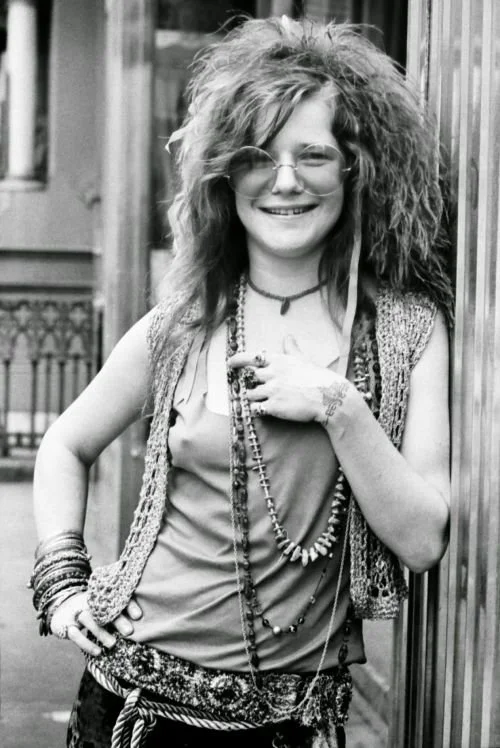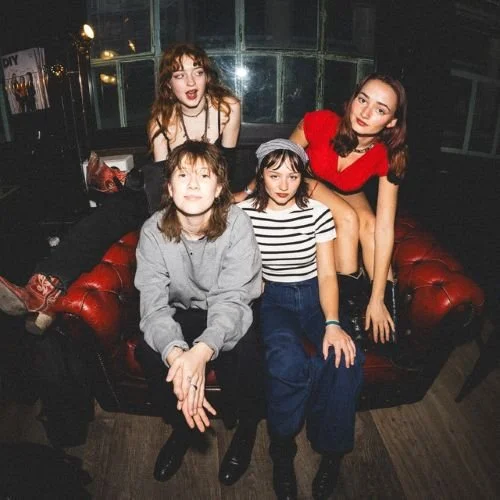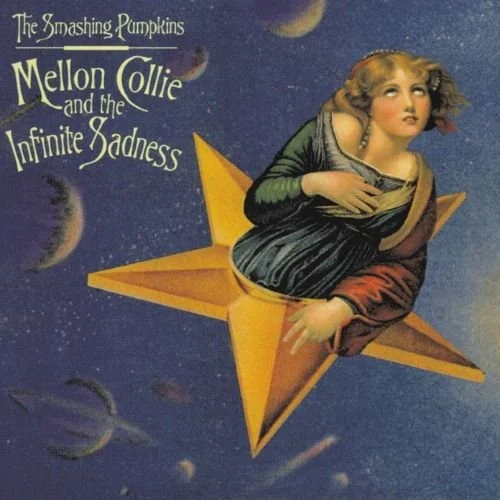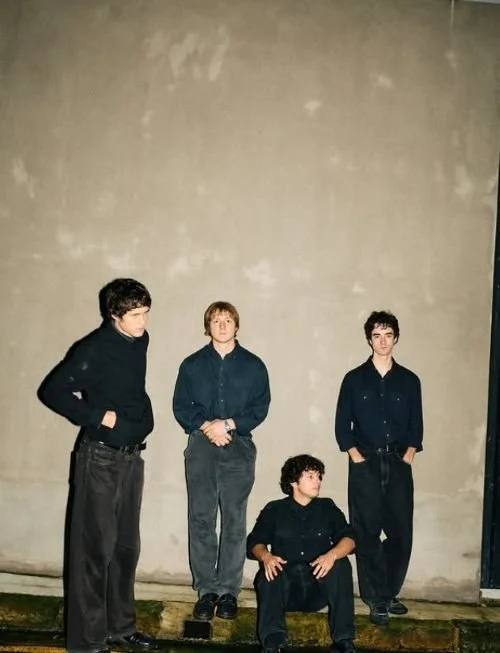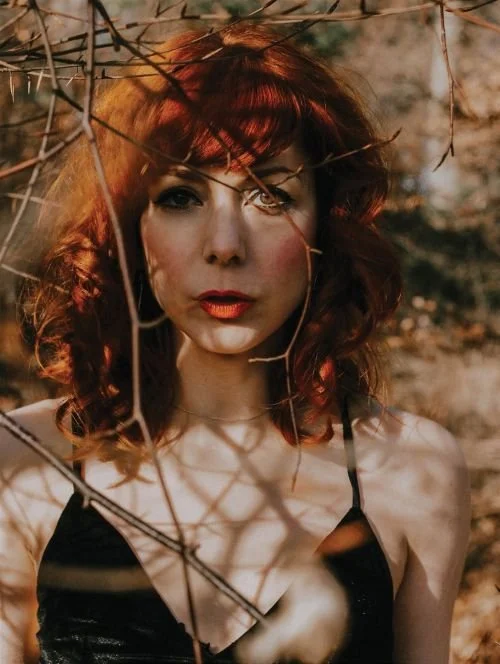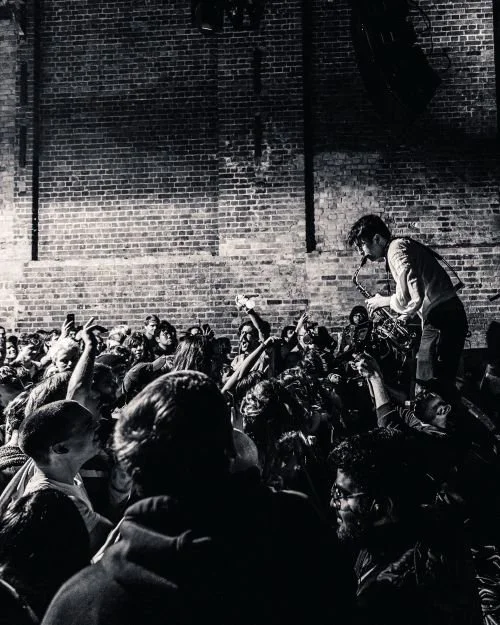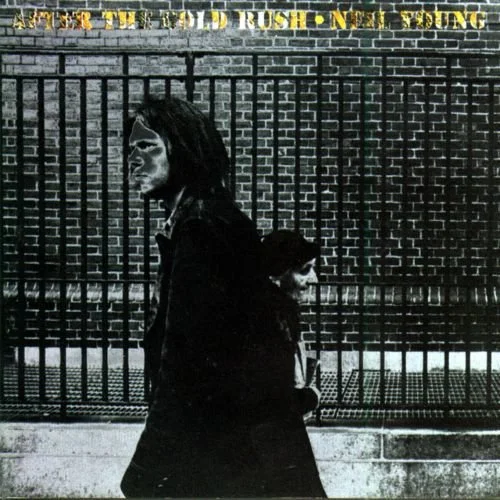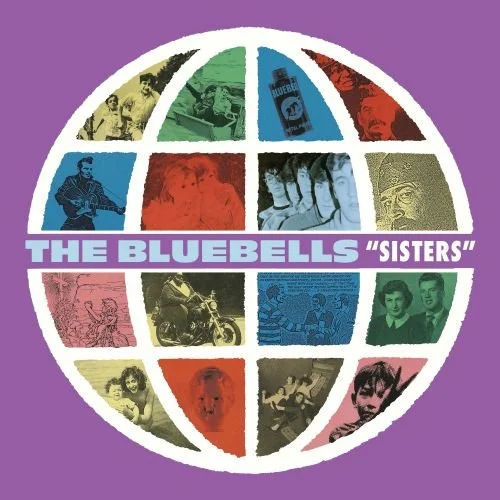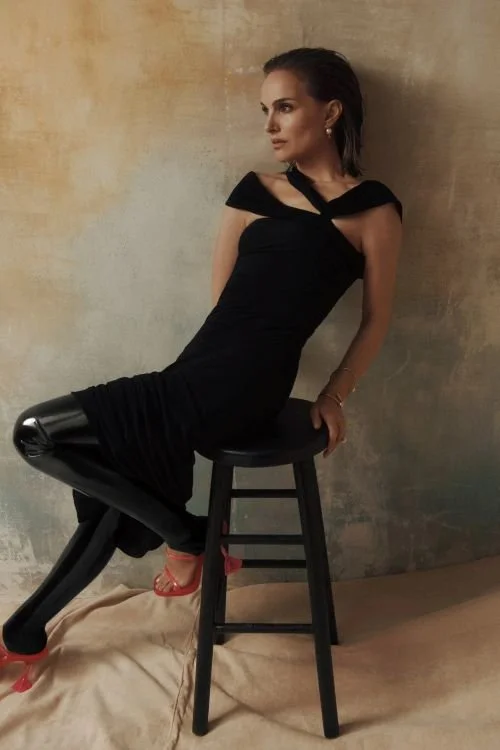FEATURE:
Beneath the Sleeve
Erykah Badu - Mama's Gun
__________
TURNING twenty-five
on 18th November, I wanted to spend some time beneath the sleeve for Erykah Badu’s second studio album, Mama’s Gun. Predominantly recorded at the Electric Lady Studios in New York City with the collective Soulquarians, Mama’s Gun is an album enforced by and driven forward by live instruments. 2000 was a year when the Neo Soul genre was still very much in bloom and flourishing. Following other classics of the genre such as Ms. Lauryn Hill's The Miseducation of Lauryn Hill (1998), Macy Gray's On How Life Is (1999) and D'Angelo's Voodoo (2000), there is a lot to discuss when it comes to Mama’s Gun. I shall come to that in time. Although it did not make a dent in the U.K. album chart or in other countries, it did reach eleven in the US Billboard 2000. It is available on vinyl. I wanted to go deep into this album as it is so important and influential. In terms of artists who took elements of Mama’s Gun and wove it into their work. I am starting out with a feature from this website that spotlights and dissects Erykah Badu’s second studio album. They state that, “While ‘Baduizm’ turned her into a household name, ‘Mama’s Gun’ cemented Erykah Badu’s status as the new face of R&B”:
“Erykah Badu first burst into the scene in 1997, with the release of her paradigm-shifting debut album, Baduizm. Showcasing an impressive range of vocals that prompted listeners to liken her to Billie Holiday, the album also saw Badu receive credit for birthing neo-soul. In truth, however, she created an atmosphere all her own. No two of her songs are the same, but a Badu track is undeniable: a sensual, brooding sound with vocals that glide up and down. Markedly hopeful and authentic, her music is the aural equivalent of the feeling of sunshine on the back of your neck, and on her second album, Mama’s Gun, Badu took a deep dive into the pivotal moments of what it meant to be alive, learning how to bolster oneself against a crushing tidal wave of emotion.
While Baduizm turned her into a household name, Mama’s Gun cemented her status as the new face of R&B. After taking several years off to raise her first child, Badu returned to the studio to record her second album, much of which was inspired by love and her relationship with her then-partner, Andre Benjamin. Leaning into a more organic sound with less-elusive lyrics, Badu opted to speak to the state of black womanhood and the world around her.
For those expecting another downtempo collection of sultry meditations, the live-band funk opener, “Penitentiary Philosophy,” puts that notion to rest. While Mama’s Gun is stylistically ambitious, the sound is also comforting and familiar. Engineer Russell Elevado introduced a warm, honey-like sound by exclusively using vintage microphones and recording equipment for the album, which was recorded in the famous Electric Lady Studios. The studio regularly housed a collective of musicians who called themselves The Soulquarians, frequent collaborators who drew inspiration from one another, solidifying the neo-soul sound of the early 00s with era-defining albums like D’Angelo’s Voodoo and Common’s career-shifting Like Water For Chocolate”.
There are a few other features and reviews that are worth bringing in. I am getting to Classic Album Sundays. They explored the story of Mama’s Gun. It is one of the most remarkable albums of the twenty-first century. One that arrived right at the start of the century. It still keeps revealing wonderful layers and colours almost twenty-five years after it arrived:
“The songs Erykah Badu had written for her second album, Mama’s Gun, signified a major thematic development in her music and an increasingly self-assured outlook in her personal life. Around midway through the writing process her romantic relationship with Andre 3000 collapsed, encouraging a great deal of self-reflection and rumination on what it means to be both a single black mother and a successful artist. There is remarkably little vitriol in her lyrics however, which explore the beauty and complexity of love and heartbreak on songs such as ‘Orange Moon’, ‘In Love With You’ and the particularly impressive ‘Green Eyes’ which illuminates the feelings of jealousy, insecurity, and denial which plague her dwindling relationship. The song ends with a clear perspective on the doomed nature of their love, yet acknowledges the “growing pains” which will haunt the years to come.
Elsewhere Badu paints a broader picture beyond the confines of her love life, diagnosing instead the state of society and the complex experience of African-Americans within it. On the opening track, ‘Penitentiary Philosophy’, she expresses an underlying rage that seems to percolate beneath much of her work, lamenting the struggles of those around her who can only scrape together a living amidst the chaotic and competitive nature of a world which discourages unity. Aesthetically the song is a far cry from the low-slung ballads of her debut album, Baduizm, infused with a furious energy that draws from the soulful rock of Hendrix and Prince. On ‘A.D 2000’ she crafts an homage to Amadou Diallo, an unarmed 23-year old immigrant shot dead outside his apartment building in 1999 by four NYPD officers after reportedly being mistaken for a rape suspect. Badu delivers the desperately sad lines “You won’t be naming no buildings after me / My name will be misstated, surely” with a tender, melodious tone that soothed a rightfully outraged public. Whilst she had become far more direct in her lyrics, throughout Mama’s Gun her razor-sharp poetic commentary remains a vital undercurrent.
Badu’s musical aesthetic had also shifted, moulding itself to the laid-back, jazz-infused nature of the Electric Lady’s Soulquarian residents. Recorded simultaneously with D’Angelo’s Voodoo and Common’s Like Water For Chocolate, Mama’s Gun was woven from the same stylistic threads that would span many future neo-soul classics. Producer Russell Elevado restricted the recording equipment to purely vintage hardware and microphones, ensuring a warm and organic sound that adhered to the languorous performance styles of musicians such as drummer Questlove and pianist James Poyser. On songs such as ‘…& On’ and ‘Cleva’ her breezy, free-wheeling nature manifests itself in a sound that seems to play with time, the music dripping out of the speakers like honey from a spoon. The percussion, bass, and piano conspire on these tracks to create syncopated grooves with deep pockets to fill, whilst Badu shifts between staccato and glissando rhythms with trademark elasticity”.
There are two more things that I want to cover before finishing up. Stereogum marked twenty years of Erykah Badu’s Mama’s Gun in November 2020. I think that I first heard the album the year is came out. I might have heard Baduizm beforehand, though I was instantly attracted to the sound of Badu and her music. This feature is slightly different to others. There is a particular section of the piece that I want to include, as it shines new light on some of the standout tracks and the meaning and story behind them:
“Mama’s Gun was a natural jam session, but Badu was still hyperconscious of the mistreatment of Black men while raising a son. On Feb. 4, 1999, Guinean immigrant Amadou Diallo was misidentified as a rape suspect and shot at 41 times — 19 bullets fatally striking him — by four NYPD officers in the Bronx. Triggered by the news, Badu grabbed her acoustic guitar and co-wrote “A.D. 2000” with late soul vocalist Betty Wright. The track swelled with mourning through multi-instrumentalist and producer James Poyser’s Minimoog while Badu and Wright banded together in multi-generational unison. In 2016, a Pitchfork review of Mama’s Gun by Daphne A. Brooks drove Badu’s point home:
In contrast to Baduizm, Mama’s Gun offers a more pointed, sustained, and grounded statement about what it means to get tired of waiting out and wading through the wretchedness of urban blight, the perpetual threat of police brutality and lethal force, the baggage from bad relationships and the sometimes oppressive voices inside one’s own head.
The universal origins of Black womanhood and its baggage was quite literally portrayed in “Bag Lady,” a reclamation of self-worth and the departure from generational trauma. While the album version of “Bag Lady” had a slower paced drum riff over a sample of Soul Mann & the Brothers’ “Bumpy’s Lament” — the source material for Dr. Dre’s 2001 track “Xxplosive” — the music video also featured the sample over a palatable, upbeat hip-hop tempo. Flipping the misogyny of “Xxplosive” into an affirmation of moving onward, each woman in the video — including Badu’s mother and her sister, Nayrok Wright — wore colors that symbolized chakras, Badu representing the root chakra. The women also duly portrayed characters from Ntozake Shange’s 1976 choreopoem For Colored Girls Who Have Considered Suicide / When The Rainbow Is Enuf. Like the scorned all-female characters of Shange’s dramatic elegy, Badu embodied the pain that women undergo when met with four words by men who feel suffocated in a relationship: “You crowding my space.”
At the video’s end, Badu experiences a moment of joy by cradling a then-infant Seven amidst subconsciously preparing him for hostility he’d face as a Black man in America. Though 2000 was a time where André and Badu both spoke similar languages to their son on separate albums, it was Mama’s Gun that was the armed bible for ongoing Black plight and self-preservation”.
I will wrap up with this review from Pitchfork. Singing its praises, they say of Mama’s Gun how this is an album “dense with ideas and sounds that draw from the past and look toward the future. Released in November 2000, it embodies the millennial tensions of that pivotal year”. Anyone who have never heard Mama’s Gun needs to investigate it right away:
“But Mama’s Gun turned an important page as she set out to pair songs that evoked the art of exquisite and romantically-charged lingering and hanging (the “urban hang suite,” as Maxwell would call it on his own debut album from 1996) alongside songs about being fed up with stasis, isolation, restriction and aborted dreams. In contrast to Baduizm, Mama’s Gun offers a more pointed, sustained, and grounded statement about what it means to get tired of waiting out and wading through the wretchedness of urban blight, the perpetual threat of police brutality and lethal force, the baggage from bad relationships and the sometimes oppressive voices inside one’s own head.
Those voices open the record’s first side in a cacophony of whispers as Badu admonishes herself about a laundry-list of unfinished tasks, nagging fears, and floating enigmas swirling through her mind (“I have to write a song… I have to remember to turn on the oven… warm up the apartment… Malcolm… Malcolm… I need to take my vitamin”). What cuts through the noise is a burst of sonic muscle—pure soul energy compressed into 10 initial seconds: the joyful ensemble (Chinah Blac and YahZarah) bellowing in Rufus-meets-Brand New Heavies unison as longtime collaborators Ahmir “Questlove” Thompson on drums, James Poyser on piano, Pino Palladino on bass, and Jeff Lee Johnson on guitar lay down a robust opening riff that sounds definitive and defiant. The opening moments of Mama’s Gun sound much less like anything off of Badu’s first record and instead resonate unmistakably in the vein of two other releases from earlier that year, Common’s fourth studio album, Like Water for Chocolate, and D’Angelo’s game-changing Voodoo. All three albums were recorded simultaneously at Electric Lady. All three benefitted from the skilled hand of legendary engineer Russell Elevado, who mixed each LP and drew on vintage recording techniques to evoke the ghosts of venerable albums past. And most crucially, all three featured MVP player Questlove acting improvisationally at the center of an alternative black pop universe at the turn of the millennium, one with clearly nostalgic tenets that nonetheless held fast to present communal concerns and future Wonder-inflected aspirations.
This was neo soul at arguably its most prolific and thrilling moment of growth and possibility. Innovated by black Gen-Xers who ardently valued and sought to revive their parents’ and their older siblings’ music and the albums that soundtracked their childhood, neo soul runs best on a seductive combination of cultural nostalgia, black solidarity dreams, and the will to couple sensually with an ideal partner while paying attention (somewhat but not always) to the politics of gender equality. And the list of remarkable artists who broke onto the scene alongside of Badu working this sound in the year of and leading up to 2000 underscores what a busy, passionate, and productive time it was.
From 1993, when Me’shell NdegéOcello stepped out ahead of everyone with Plantation Lullabies on Madonna’s Maverick label to D’Angelo’s 1995 first effort Brown Sugar (often erroneously referred to as the first in the genre) a year later to Maxwell’s debut (Urban Hang Suite) to Lauryn Hill’s insta-classic Miseducation in ’98 to oddball soulster Macy Gray’s one-hit smash On How Life Is in ’99, to the year 2000 when Jill Scott made her first LP (Who Is Jill Scott? Words and Sounds Volume I), these were exciting times when black singer-songwriter musicians were referencing Black Panther memoirs, African-American Studies history books, and deep cuts from reluctant soul icons like Bill Withers. In the days after Voodoo dropped into the world, New York Times critic Ben Ratliff would famously describe the genre as “a mature music, and a family music, for living rooms, rather than for the streets.”
“Penitentiary Philosophy,” the charging, opening track on Mama’s Gun pulls all of these ambitions together. Bursting with the energy and the righteous discontent of King’s letter from a Birmingham jail (in which he declared to the world “why we can’t wait” for liberation), it recalls the sonic palette of Maggot Brain-era Funkadelic while venturing further down the road of trenchant social critique that Badu had already begun to walk on Baduizm’s “Other Side of the Game,” her third single off of that album and one that planted her firmly in the run of socially-conscious hip-hop culture. With its looped sample of Stevie’s “Ordinary Pain,” “Penitentiary Philosophy” stays focused on the perils and corrosive effects of streets that don’t love you, streets that can trap you. “Here’s my philosophy/Livin’ in a penitentiary…” she declares, dropping verses like Gil Scott-Heron, “Brothers all on the corner/Tryin’ to make believe/Turn around ain’t got no pot to pee/Make me mad when I see you sad… you can’t win when your will is weak/When you’re knocked on the ground….” In the same year that David Simon dropped “The Corner” and two years before his masterpiece “The Wire,” Badu was still singing about the effects of the game from a woman’s point of view (something Simon’s shows were often, at best, half-assed about doing). Still the caring sister who observes the ensuing crisis from the sidelines, Badu has morphed on this track out of the role of devoted bystander into full-scale Last Poet”.
I do hope that there are features published in November. Twenty-five years after the release of Erykah Badu’s second album. One of those albums that I could listen to over and over again. I know there have been smatterings of activity from Erykah Badu over the past few years. However, there is a collaborative album, Abi & Alan (with The Alchemist), coming out this year I understand. Having recently toured, there will be separate tour dates to mark twenty-five years of Mama’s Gun. You can also get details from this podcast episode. It is an exciting time where Erykah Badu looks forward and back. Back at a classic. When I think of Mama’s Gun, there is really…
NOTHING quite like it.




